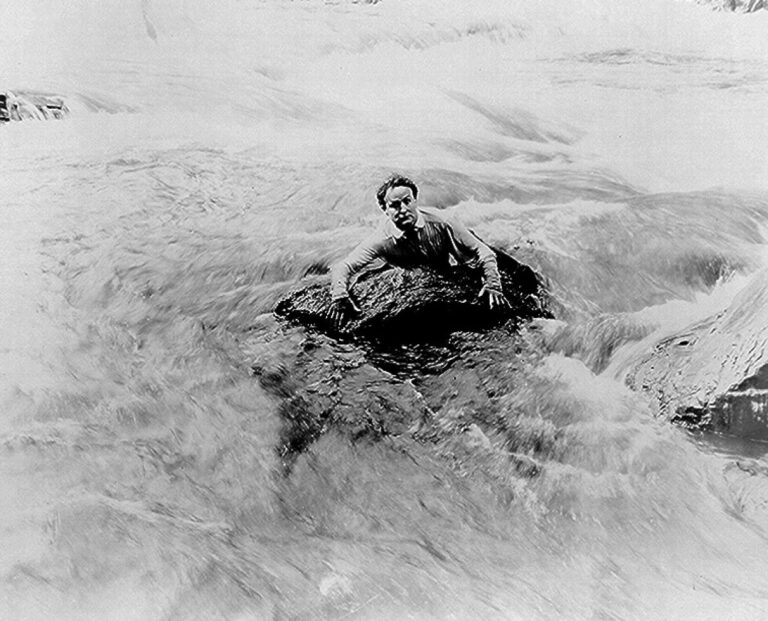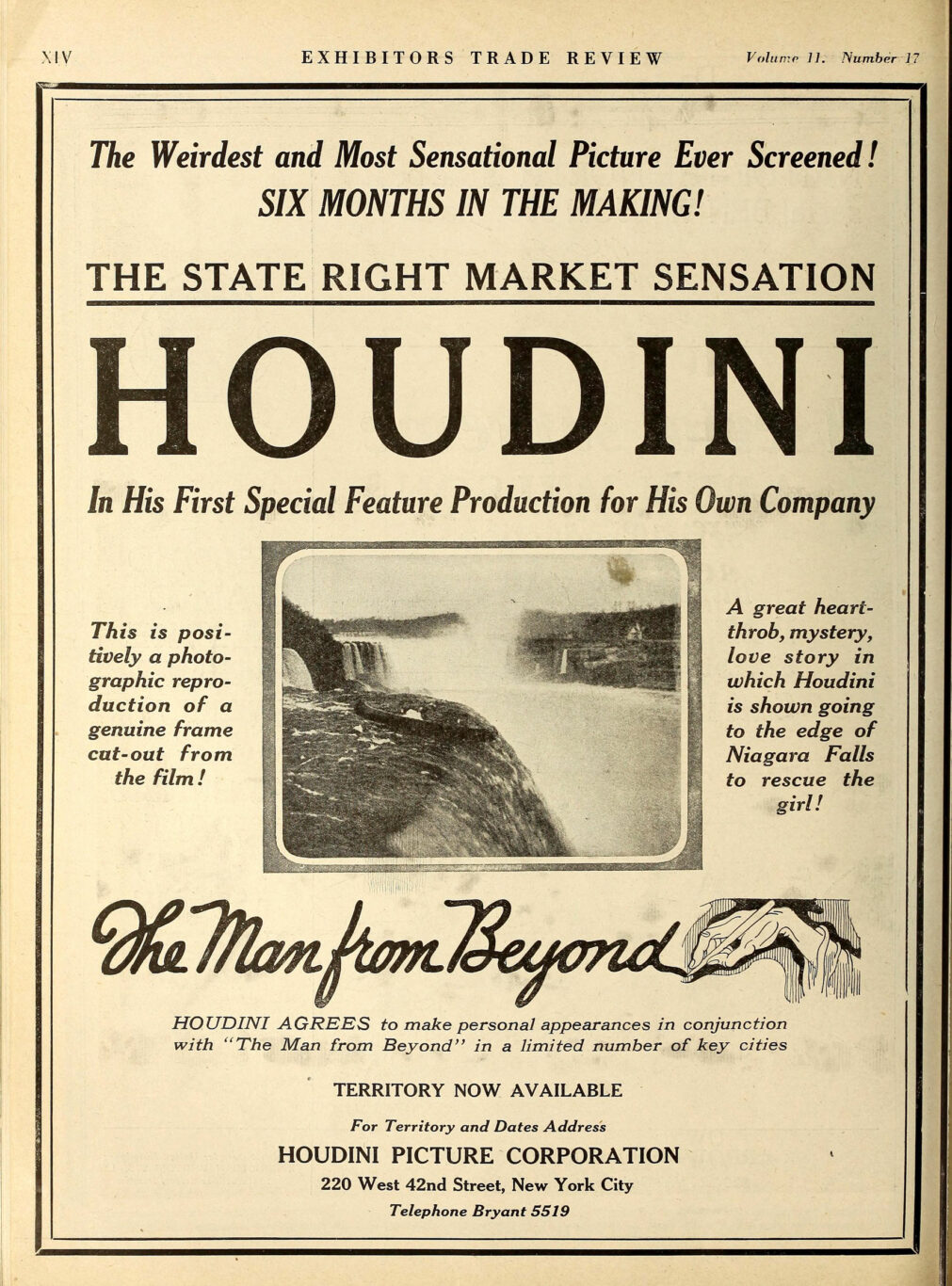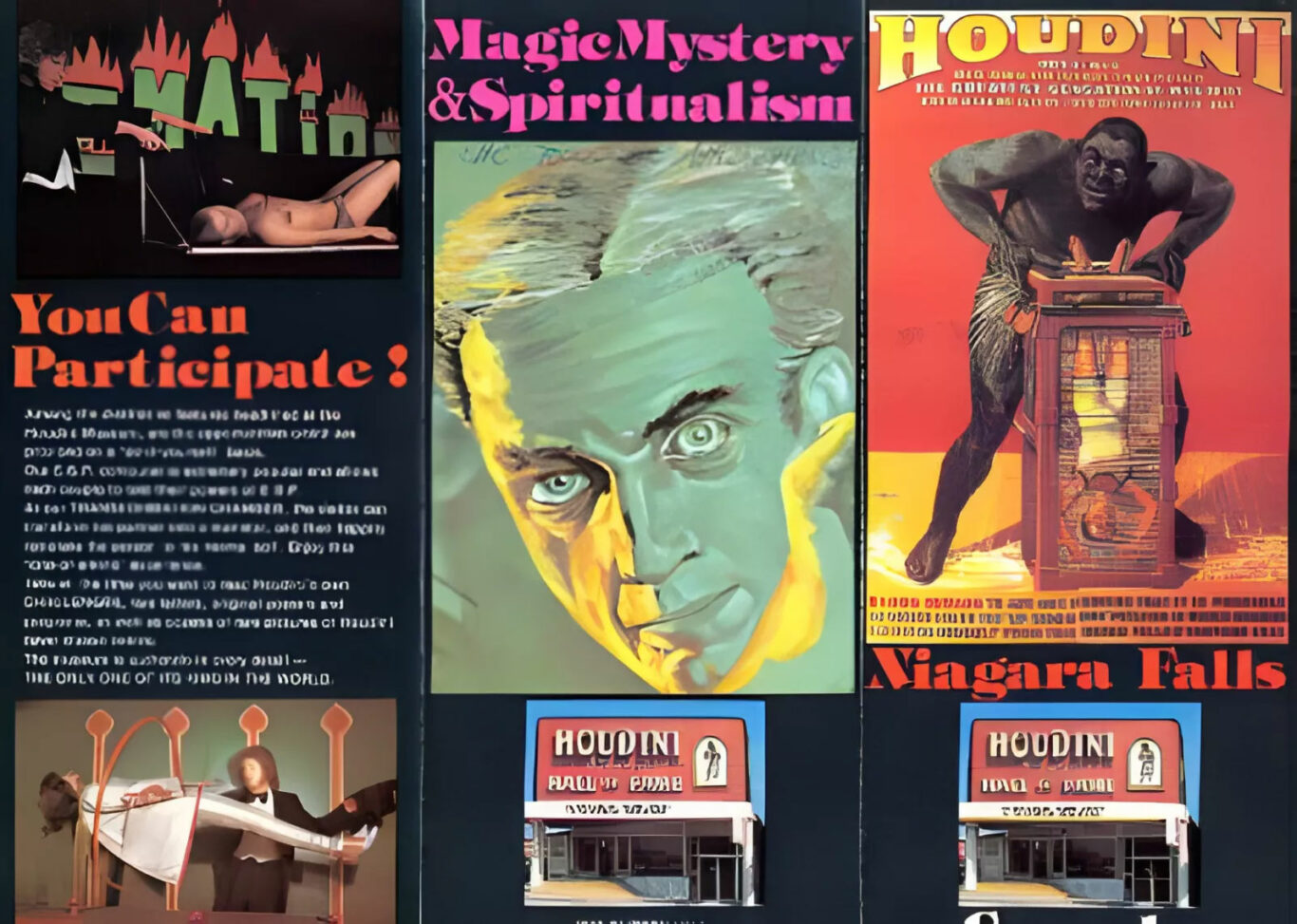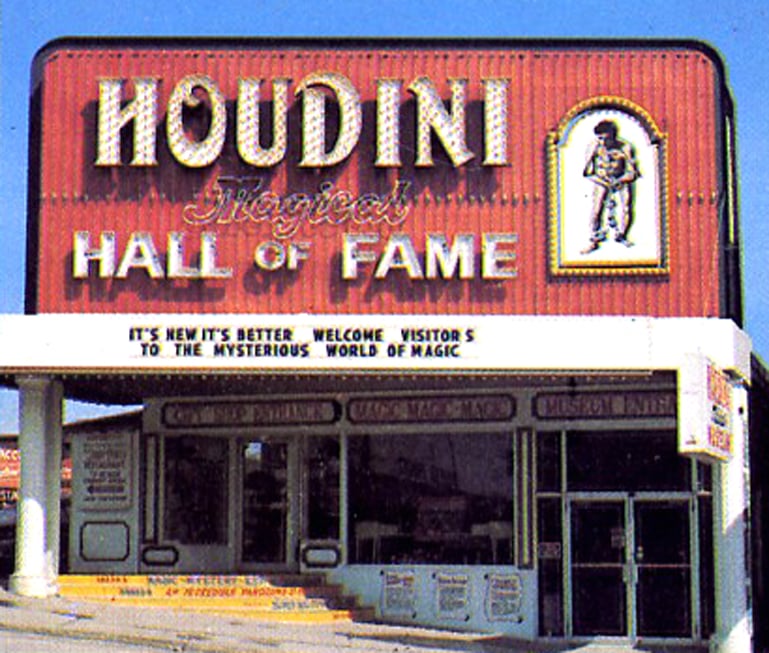The Untold Story of a Magician’s Dangerous Romance with the Mighty Cataract
The Infamous 1901 Stunt: Fact or Fiction?
In the realm of escapology, few names command as much awe as Harry Houdini. But while Houdini’s legendary feats span from European jail breaks to death-defying underwater escapes, one of the most enduring tales tied to his name remains shrouded in mystery—and myth: a supposed stunt at Niagara Falls in 1901.
According to persistent local legend, on a sweltering July afternoon, a young Houdini—then just 27 years old—allegedly stood near Ontario Beach Park, shackled in regulation handcuffs and leg irons, sealed inside a custom-built wooden crate reinforced with 200 nails, and lowered into the churning Niagara River just 200 yards upstream from Horseshoe Falls.
The Toronto World reportedly wrote with breathless excitement:
“At 3:15 PM, the crate hit the water. For three agonizing minutes, it tumbled through the rapids before Houdini emerged, gasping but triumphant, near the Toronto Power Company’s intake pipes.”
It’s a story worthy of Houdini’s legend—but one historians have never been able to confirm.
“There’s no photographic evidence, no entry in Houdini’s meticulously kept diaries, and no known eyewitness accounts that withstand scrutiny,” says William Kalush, co-author of The Secret Life of Houdini. “But the idea of it? It’s exactly the kind of myth Houdini himself might’ve encouraged.“
Also in Houdini’s notes, as cited by biographer Walter B. Gibson, reveal that he considered an escape involving being sealed in a packing crate and going over Niagara Falls. However, these notes were “merely suggestions that had not reached the point of practical solution” and were intended as a “trick test” rather than an actual stunt. Houdini recognized the impracticality and danger of such a feat, and there is no record of him attempting it.
Indeed, Houdini was no stranger to the power of illusion—both on stage and in the press. While records confirm that he performed numerous overboard box escapes (notably in New York’s East River in 1912), there’s no verified evidence he ever attempted such a stunt at Niagara Falls. The Niagara Falls Public Library’s archives do contain letters and clippings from locals who claim to have seen Houdini perform near the American Falls, but details vary widely and are often secondhand recollections.
Still, like the mist that veils the Horseshoe Falls, the line between fact and folklore remains tantalizingly blurred.
The Cinematic Return: “The Man From Beyond” (1922)

Two decades later, Houdini returned to Niagara Falls—not to defy death, but to capture it on film. In June of 1921, his independent film company arrived at the cataract to shoot The Man From Beyond, a supernatural melodrama about reincarnation, redemption, and (of course) escape.
Production Timeline:
- Dates: June 12 – July 3, 1921
- Schedule: Primarily weekdays to avoid the weekend crowds
- Director & Star: Harry Houdini himself
Key Filming Locations:
- The whirlpool rapids for a suspenseful canoe rescue
- Prospect Point for sweeping cliffside scenes
- The old Upper Steel Arch Bridge (predecessor to today’s Rainbow Bridge)
- Queen Victoria Park, used as a backdrop for the film’s finale
True to his character, Houdini insisted on performing all of his own stunts. Local press, including Motion Picture News, covered the spectacle on June 25, 1921:
“Mr. Houdini’s company caused quite a stir yesterday when their camera raft nearly capsized in the lower rapids. The star himself dove in to rescue equipment valued at $1,200.”
Among the most daring sequences was a 60-foot climb up a wet cliff face, performed without safety ropes, and a staged canoe rescue involving stand-in actress Alice Baldwin—playing opposite Houdini as a reincarnated love interest. Underwater scenes were filmed in the icy currents near the whirlpool, drawing curious onlookers daily.
The result, The Man From Beyond, premiered in 1922 and was one of the earliest major motion pictures to feature Niagara Falls as a dramatic backdrop.
The Rise and Fall of Niagara’s Houdini Magical Hall of Fame on Clifton Hill
The Houdini Magical Hall of Fame first opened in June 1968 at 1019 Centre Street in Niagara Falls, Canada, founded by local businessmen Henry Muller and Vince Delorenzo. The museum’s creation followed a remarkable chain of events: After Houdini’s death in 1926, his magical apparatus was willed to his brother Theodore (Hardeen) with instructions to destroy it. When these wishes went unfulfilled, the collection remained in storage for 40 years until being auctioned in 1967. Muller learned of the sale through a Toronto newspaper article and acquired the historic artifacts, transforming a former meat packing plant into the world’s first museum dedicated to Houdini.
The museum’s early years were marked by strange occurrences – a series of fires, a robbery, and even a director walking through a plate glass window – leading some to believe Houdini’s spirit was displeased. In 1972, the collection moved to the historic Victoria Park train station (built in the mid-1800s) at 4983 Clifton Hill, becoming a crown jewel of the tourist district. For 27 years, visitors marveled at authentic artifacts including Houdini’s original Water Torture Cell, personal handcuffs, and rare photographs. The museum became famous for its annual Halloween séances, including a 1974 event where a book mysteriously fell open to a page asking “Do Spirits Return?” – just as a medium requested a sign from Houdini.
The museum’s dramatic history came to a fiery end on April 30, 1995, when a suspicious blaze destroyed much of the collection, ironically fulfilling Houdini’s original wish to have his apparatus destroyed. Ripley’s Entertainment acquired the property in 1996, first operating a 4D theater and later converting the space to the current Ripley’s Selfie Studio. While the physical museum is gone, surviving artifacts can be viewed at the Niagara Falls History Museum and in private collections. Magic enthusiasts still make pilgrimages to the site, remembering when Clifton Hill was home to one of the world’s most significant tributes to the Great Houdini.
The Falls’ Enduring Magic: Where to Experience Houdini’s Legacy Today
Though Houdini’s ties to Niagara are more mythic than material, echoes of his legacy can still be found nearby:
The Houdini Collection – Niagara Falls Public Library
- Holds early 20th-century newspaper clippings (some more accurate than others)
- Correspondence from fans and locals who claimed to witness the 1901 stunt
- Historical photographs – Including images of Houdini filming “The Man From Beyond” at the Falls (1921)
Film Location Pilgrimage
Film buffs can trace locations from The Man From Beyond along the Niagara River.
- Whirlpool Rapids Gorge: Best viewed from the Spanish Aero Car or White Water Walk
- Old Scow Tender’s House: Visible in several film frames
- Queen Victoria Park: Perfect for reenacting your own dramatic escape from modern life
Verdict: Magic, Memory, and the Mist of Myth
Was Houdini ever shackled and dropped above the Falls? Probably not. But the legend persists—just as he likely would have wanted it.
What we do know is this: Houdini harnessed Niagara Falls not just as a force of nature, but as a stage. In The Man From Beyond, he immortalized its drama on celluloid. In legend, he cemented his connection to its mythos.
As Niagara Falls historian Sherman Zavitz puts it:
“Houdini understood better than anyone that Niagara wasn’t just a natural wonder—it was the ultimate illusion. Whether escaping death or filming it, he knew the Falls would magnify his story.”
And more than a century later, that story still mesmerizes.



















